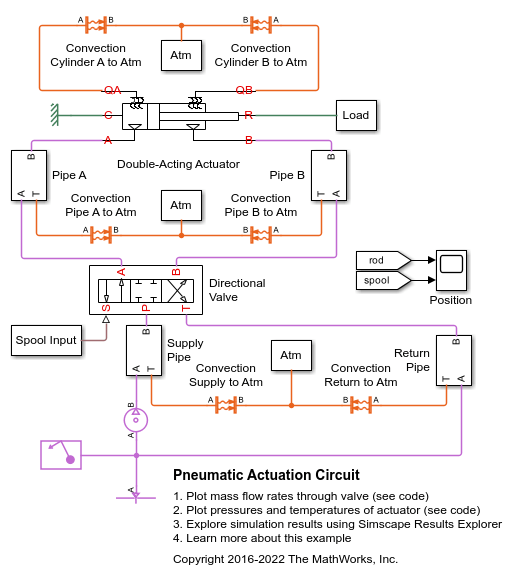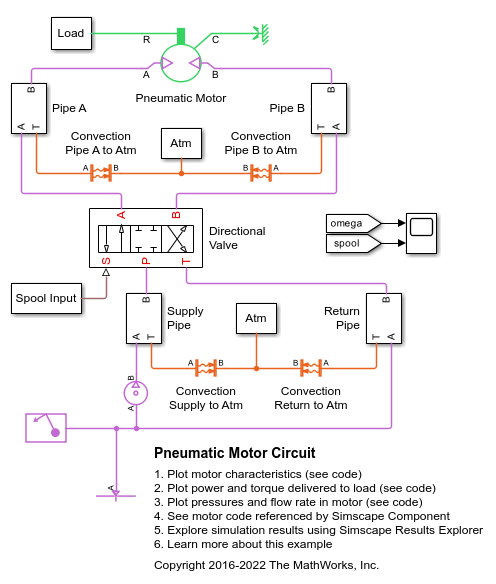Pressure Source (G)
Generate constant or time-varying pressure differential
Libraries:
Simscape /
Foundation Library /
Gas /
Sources
Description
The Pressure Source (G) block represents an ideal mechanical energy source in a gas network. The source can maintain a constant pressure differential across its ports regardless of the flow rate through the source. There is no flow resistance and no heat exchange with the environment.
Ports A and B represent the source inlet and outlet. The input physical signal at port P specifies the pressure differential. Alternatively, you can specify a constant pressure differential as a block parameter. A positive pressure differential causes the pressure at port B to be greater than the pressure at port A.
You can choose whether the source performs work on the gas flow:
If the source is isentropic (Power added parameter is set to
Isentropic), then the isentropic relation depends on the gas property model.Gas Model Equations Perfect gas Semiperfect gas Real gas The power delivered to the gas flow is based on the specific total enthalpy associated with the isentropic process.
If the source performs no work (Power added parameter is set to
None), then the defining equation states that the specific total enthalpy is equal on both sides of the source. It is the same for all three gas property models.The power delivered to the gas flow Φwork = 0.
The equations use these symbols:
| cp | Specific heat at constant pressure |
| h | Specific enthalpy |
| Mass flow rate (flow rate associated with a port is positive when it flows into the block) | |
| p | Pressure |
| R | Specific gas constant |
| s | Specific entropy |
| T | Temperature |
| w | Flow velocity |
| Z | Compressibility factor |
| Φwork | Power delivered to the gas flow through the source |
Subscripts A and B indicate the appropriate port.
Assumptions and Limitations
There are no irreversible losses.
There is no heat exchange with the environment.

